There is a new way of thinking about how to protect the shorelines of the Indian River Lagoon.
The old way was to harden the shore by building concrete seawalls and installing piles of large boulders called rip rap, which is evident in the populated areas of Brevard. But seawalls are expensive to build and costly to maintain.
The new approach, called a “living shoreline,” is created by planting mangroves along the shore. Fronting them in the shallows, oyster reefs are planted to absorb the wave action. And in front of those are rocks that form a breakwater. This living shoreline works to diminish wave activity during storm events, resulting in the opposite of erosion, a process called “accretion” that actually adds to the shoreline.
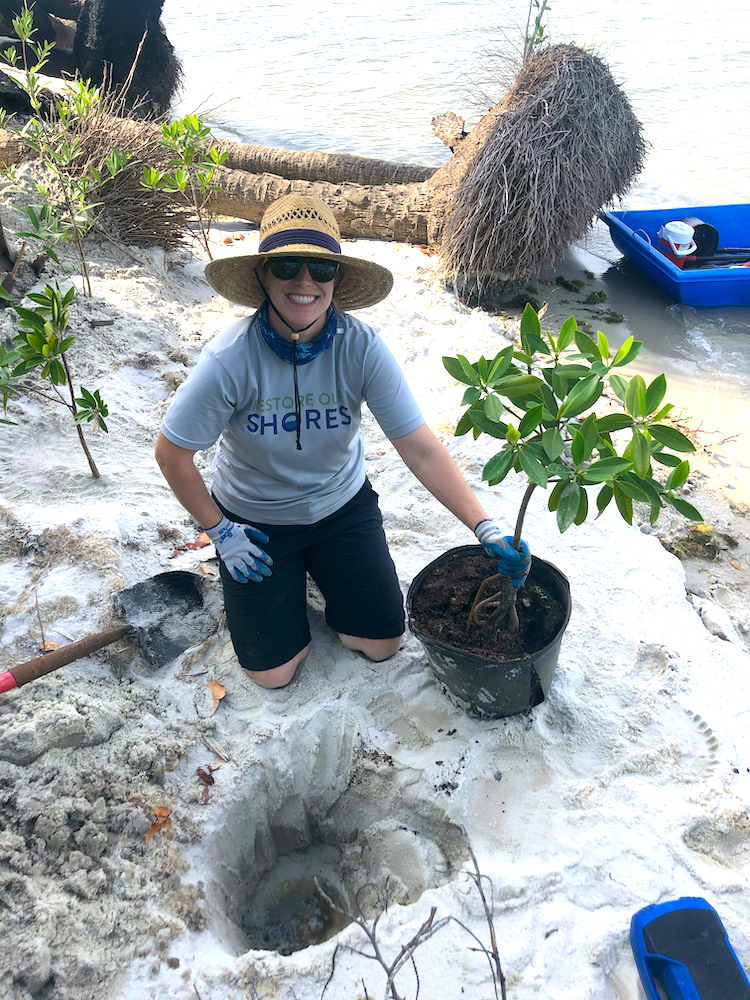
“We’re trying to be sensitive to the environment”, says Dave Susa from the Riveredge Condo complex in Titusville, which is planning to replant the entire 250-foot shoreline along their property. They currently have a seawall and rip rap barrier that has been a maintenance problem for years. The first step has been to plant native plants along the shore, to be followed by relocating their rock barrier about 10 yards further out into the lagoon to form a protective breakwater. Later, after a permit is issued from the state, mangroves will be planted.
The cost of the project is not cheap: $20,000 by one estimate, but still cheaper than repairing or replacing what is there now.
“We see the living shoreline as a permanent and natural thing,” Dave said. “We’re trying to go back more to nature.”
Two local agencies, the Marine Resources Council and the Conservation Program of the Brevard Zoo, are working to save natural shorelines along the lagoon. Their efforts are designed to restore shorelines to their natural state, help improve water quality and combat erosion in the lagoon.
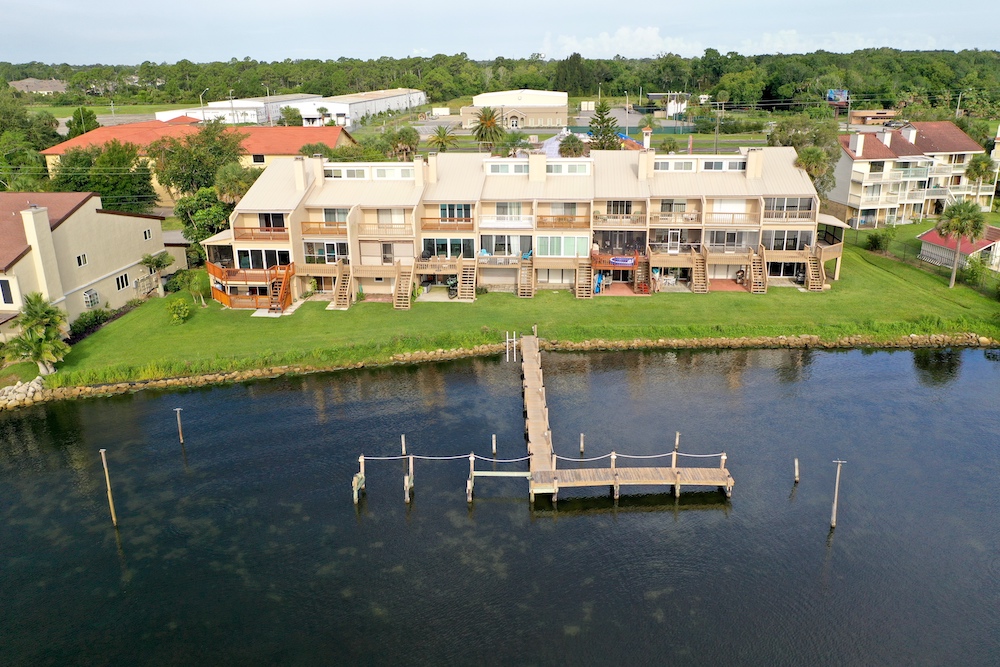
Both agencies receive grant funding from the Florida Department of Environmental Protection and from the Brevard County Save Our Indian River Lagoon Trust Fund. The trust fund comes from money generated by the voter-approved half-cent sales tax to restore the lagoon.
The Brevard Zoo’s “Restore Our Shores” program plants mangroves along shorelines to serve as a barrier against erosion during storms and act as buffer. The mangroves act as a buffer against high-water surges. The zoo also has a “Shuck and Share” program that utilizes restaurant-donated oyster shells that are recycled into the lagoon to form oyster reefs along natural shorelines. The reefs block erosion and help clean the lagoon waters through a filtration process.
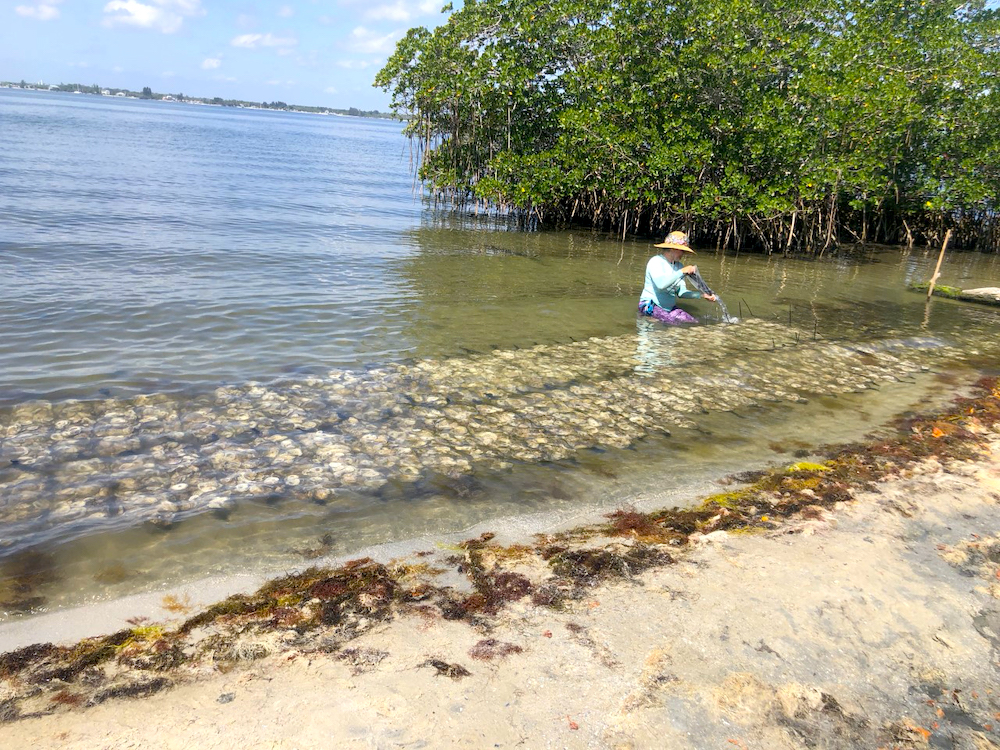
According to Olivia Escandell, Shuck and Share program coordinator, each new oyster potentially filters 30 to 50 gallons of lagoon water daily, helping restore water quality. She calls the shells “the liver on the river” for their water filtering ability. The zoo began recycling oyster shells in 2009 and built the first reef in 2015. Nearly four million pounds of oyster shells have been recycled into the lagoon, forming more than a mile of reefed shoreline. The ambitious effort eventually has a goal of up to 20 miles of reefs, which would be enough oysters to filter the entire lagoon.
The zoo’s biggest shoreline project to date was recently completed on the lagoon side of Melbourne Beach, with the replanting and reefing over 900 feet of unprotected shoreline in a Brevard County Environmentally Endangered Land (EELS) park. The work consisted of laying down oyster reefs and planting mangroves.
Although the Zoo was closed, the oyster reef building continued during the Covid-19 shutdown, since operations had been funded in advance by state and county grants. Furloughed employees from the zoo were hired for the work, instead of the normal reliance on volunteers. Since many restaurants were closed during the pandemic, there was a drop off in the number of oyster shells available for recycling.
The Marine Resources Council work consists primarily of mangrove restoration along the shores of the Indian River Lagoon. The MRC even has large nurseries in Palm Bay and Vero Beach which cultivate and grow all three Florida mangrove species…red, white and black.
According the Caity Savoia, Director of Science and Restoration at MRC, the replanting program is a struggle against nature, as only about 50% of replanted mangroves survive and grow to maturity. But when the plants thrive, the experiment works. Instead of shoreline erosion, there is actually shoreline growth, the process known as accretion.
The MRC has over 5,000 mangroves in their nurseries ready for planting. There are more in the backyards of “foster” homes along the lagoon, where homeowners volunteer to plant mangrove seedlings and tend to them until they’re ready to transplant.
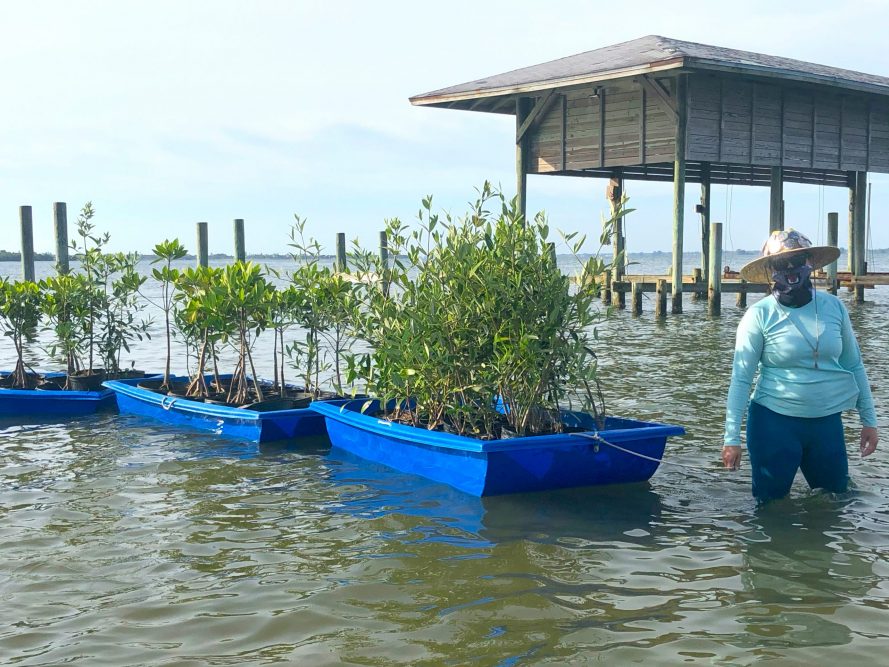
In the right environment, mangroves can be fast growers, reaching nearly seven-feet in two years. Red mangroves are planted right at the waterline and can propagate quickly by dropping seeds year-round, filling in the shoreline. Black and white mangroves are planted a few feet back from the waterline, and only drop their seeds in the fall.
Just offshore from the mangroves is a rocky breakwater, which calms the water before it reaches the shore and protects the mangrove plantings.
“This breakwater provides habitat and protects the shoreline,” Caity said. “They provide a natural refuge for juvenile fish.”
In addition to the mangroves, MRC plants another native plant called Spartina (a grass usually found in coastal salt marshes), which helps stabilize the shoreline and remove invasive species.
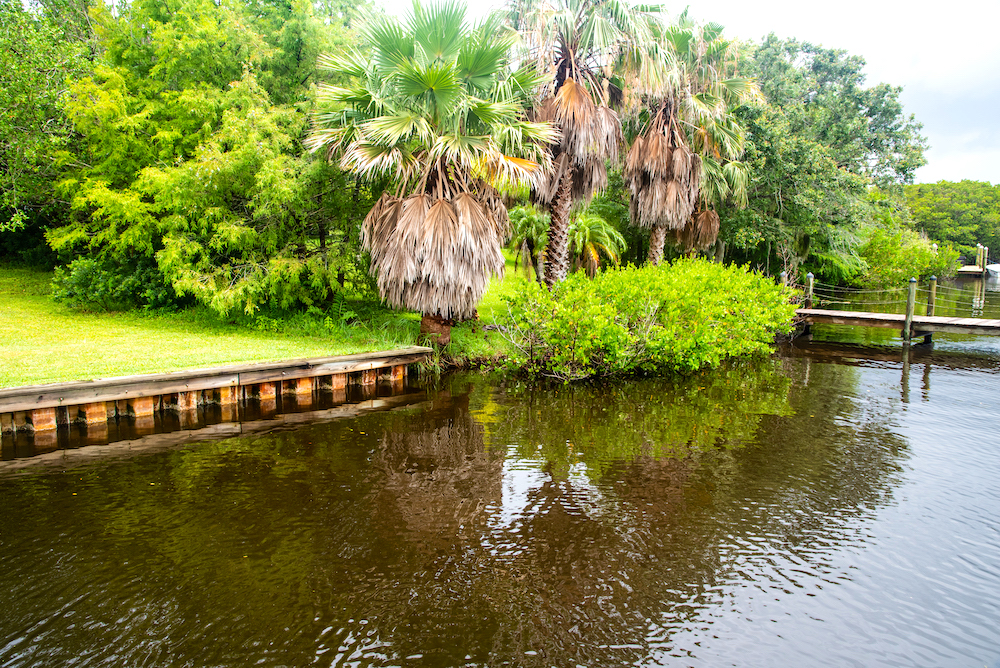
The biggest MRC project is happening at their Lagoon House headquarters located on Dixie Highway in Palm Bay. They are planting mangroves and building breakwaters to protect 1,500 feet of shoreline along the lagoon. Several other smaller projects have occurred at Brevard County parks located along the lagoon.
Caity is hopeful of getting more private property owners along the lagoon to get involved in the environmental effort. She is the consultant on the Riveredge project in Titusville and says the Riveredge condo owners are “at the forefront among lagoon homeowners for natural shorelines.” •
For more information or to donate, visit the Marine Resources Council online at savetheirl.org or call 321-725-7775.
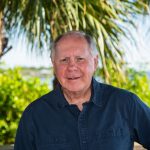
Fred Mays
Fred Mays is a freelance writer and photographer who resides in Satellite Beach. He is a retired television journalist, and active on media issues with the Brevard Indian River Lagoon Coalition. His blog is www.floridaunplugged.net.




